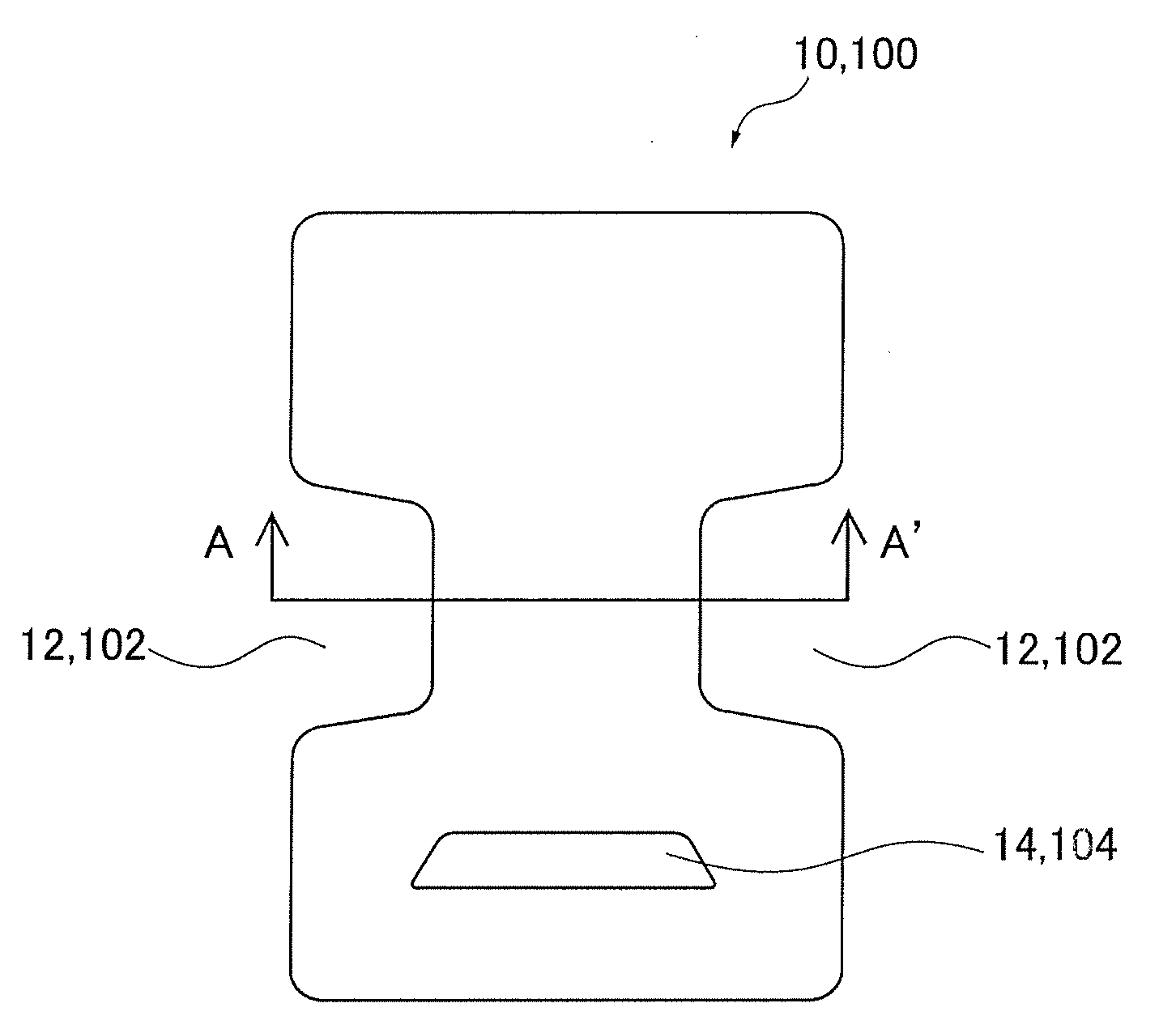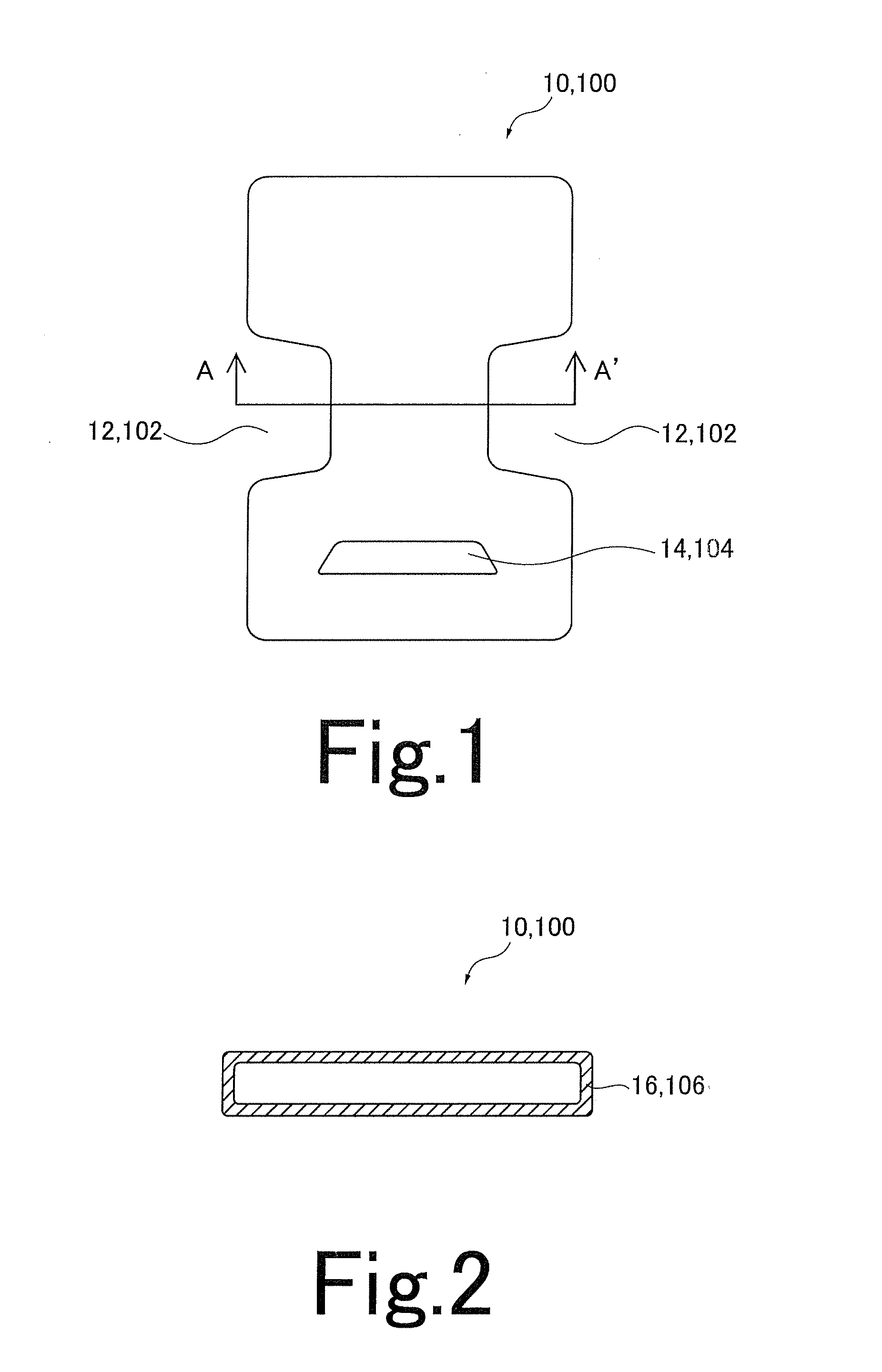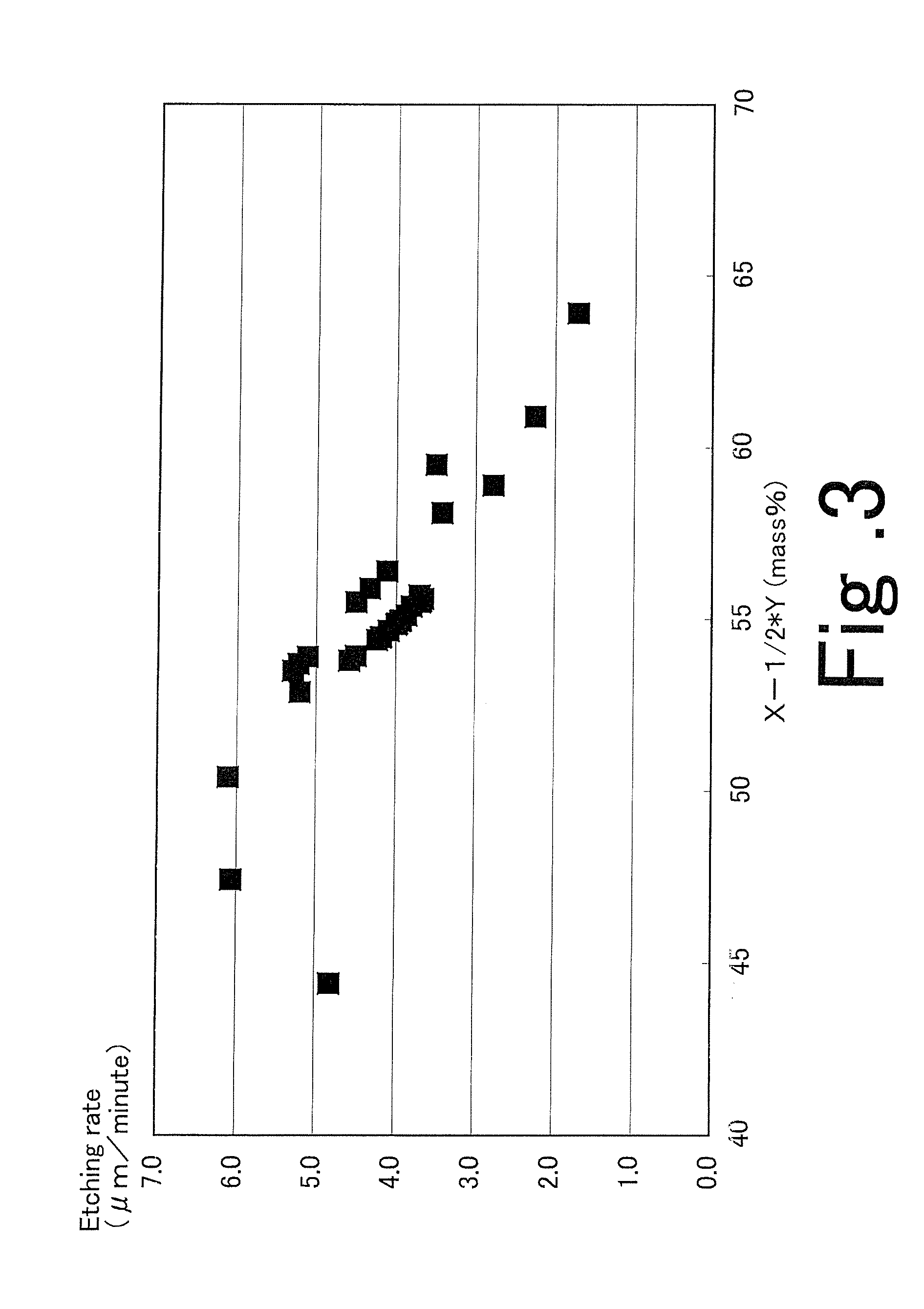Cover glass and method for producing cover glass
a technology of cover glass and etchant, applied in the field of cover glass, can solve the problems of poor shape accuracy, difficult to subject a strengthened glass to outer-shape processing, and a plethora of other problems, to achieve the effect of improving the production efficiency of cover glass and high shape accuracy
- Summary
- Abstract
- Description
- Claims
- Application Information
AI Technical Summary
Benefits of technology
Problems solved by technology
Method used
Image
Examples
examples
[0258]Now, the present invention will be described in further detail below according to Examples thereof. The present invention, however, is not to be limited to the following Examples.
[0259]Preparation of Glass According to First Embodiment:
[0260]First, glass materials (batches) were prepared by using general glass materials, i.e., silica, alumina, sodium sulfate, lithium carbonate, sodium carbonate, potassium carbonate, basic magnesium carbonate, calcium carbonate, tin dioxide, and zirconium oxide, so as to provide the glass compositions as shown in Tables 1 and 2 (Samples 1 to 28) and Tables 3 and 4 (Samples 29 to 33). Each prepared batch was heated in an electric furnace for 4 hours at 1550° C. with a platinum crucible and was made into molten glass, and then, outside the furnace, the molten glass was spread out onto an iron plate to cool, to thereby prepare a block of glass. The glass block was kept in an electric furnace for 30 minutes at 600° C., then the furnace was turned o...
PUM
| Property | Measurement | Unit |
|---|---|---|
| Temperature | aaaaa | aaaaa |
| Fraction | aaaaa | aaaaa |
| Fraction | aaaaa | aaaaa |
Abstract
Description
Claims
Application Information
 Login to View More
Login to View More - R&D
- Intellectual Property
- Life Sciences
- Materials
- Tech Scout
- Unparalleled Data Quality
- Higher Quality Content
- 60% Fewer Hallucinations
Browse by: Latest US Patents, China's latest patents, Technical Efficacy Thesaurus, Application Domain, Technology Topic, Popular Technical Reports.
© 2025 PatSnap. All rights reserved.Legal|Privacy policy|Modern Slavery Act Transparency Statement|Sitemap|About US| Contact US: help@patsnap.com



